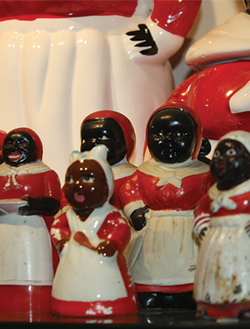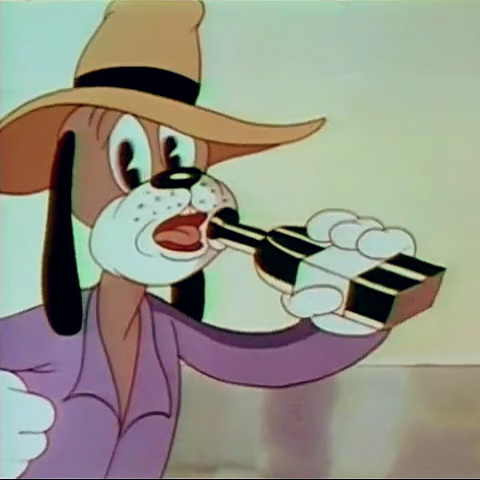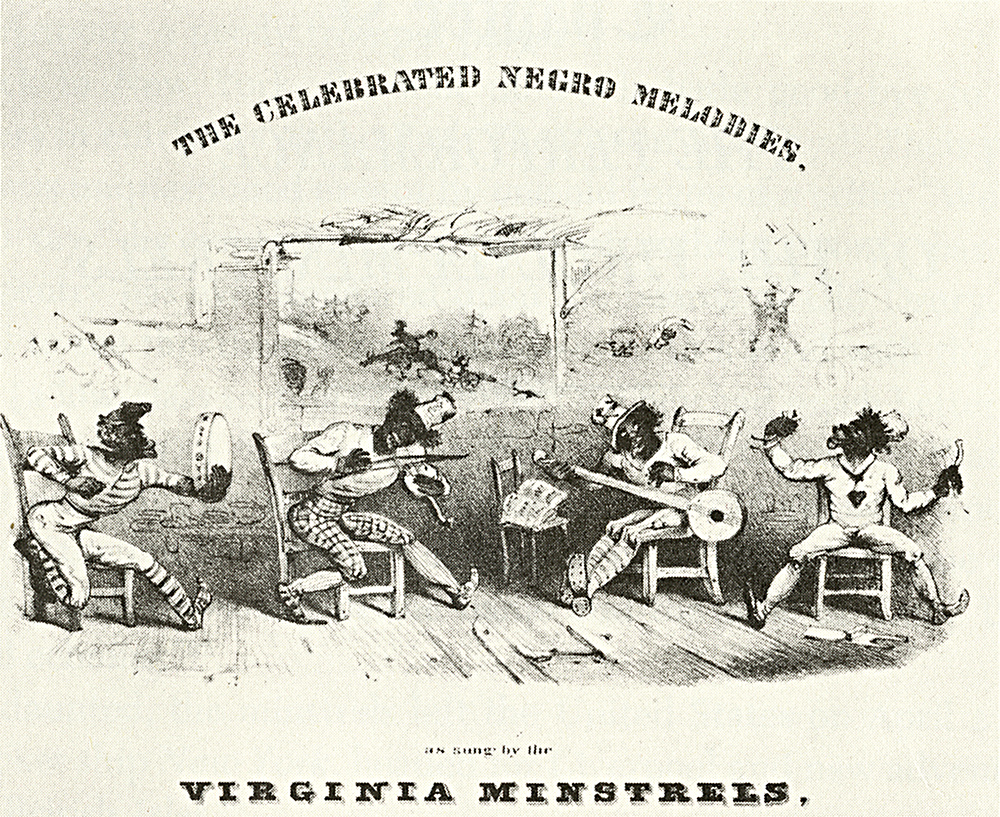|
Jungle Jitters
''Jungle Jitters'' is a 1938 Warner Bros. ''Merrie Melodies'' cartoon directed by Friz Freleng. The short was released on February 19, 1938. Because of the racial stereotypes of black people throughout the short, it prompted United Artists to withhold it from syndication within the United States in 1968. As such, the short was placed into the Censored Eleven, a group of eleven ''Merrie Melodies'' and ''Looney Tunes'' shorts withheld from official television distribution in the United States since 1968 due to heavy stereotyping of black people; because its copyright had already lapsed without renewal a year before this decision, it has remained publicly available through numerous unofficial distributors via secondhand prints.The Straight Dope. Plot In a jungle, a primitive tribe of people with black noses and dark skin with light muzzles are going about their day, with the jungle elements being intertwined with modern-day gags; for example, the people dancing around a tent (i ... [...More Info...] [...Related Items...] OR: [Wikipedia] [Google] [Baidu] |
Willie Whopper
Willie Whopper is an animated cartoon character created by American animator Ub Iwerks. The Whopper series was the second from the Iwerks Studio to be produced by Pat Powers and distributed through Metro-Goldwyn-Mayer. 14 shorts were produced in 1933 to 1934. History Willie is a young lad who tells of his many outlandish adventures, which are then depicted on-screen. His fantastic accounts are, in fact, outright lies or "whoppers". His stories are usually preceded by his memorable catchphrase, "Say, did I ever tell ya this one?" The character's first-produced film was ''The Air Race'' (1933), in which Willie tells of how he entered and won the 1933 National Air Race—even receiving a kiss from Amelia Earhart in the end. The short reflects Iwerks' own fascination with aviation. One scene even involves a plane crashing into a "Fireworks" stand which, afterwards is reduced in spelling to "I WERKS" (the animator Ub Iwerks' last name). ''The Air Race'' was initially left unreleased ... [...More Info...] [...Related Items...] OR: [Wikipedia] [Google] [Baidu] |
Censored Eleven
The Censored Eleven is a group of ''Looney Tunes'' and ''Merrie Melodies'' cartoons originally produced and released by Warner Bros. that were withheld from syndication in the United States by United Artists (UA) since 1968. UA owned the distribution rights to the Associated Artists Productions library at that time, and decided to pull these 11 cartoons from broadcast because the use of ethnic stereotypes in the cartoons, specifically African stereotypes, was deemed too offensive for contemporary audiences. The ban has been continued by UA and the successive owners of the pre-August 1948 ''Looney Tunes''/''Merrie Melodies''. , these shorts have not been officially broadcast on television and have only been exhibited once theatrically by Warner Bros. in 2010 (see below for more details) since their withdrawal. They have turned up, however, on low-cost VHS and DVD collections. Background The cartoon output of Warner Bros. during its most active period even sometimes had c ... [...More Info...] [...Related Items...] OR: [Wikipedia] [Google] [Baidu] |
Robert Taylor (American Actor)
Robert Taylor (born Spangler Arlington Brugh; August 5, 1911 – June 8, 1969) was an American film and television actor and singer who was one of the most popular leading men of cinema. Taylor began his career in films in 1934 when he signed with Metro-Goldwyn-Mayer. He won his first leading role the following year in '' Magnificent Obsession''. His popularity increased during the late 1930s and 1940s with appearances in '' Camille'' (1936), '' A Yank at Oxford'' (1938), ''Waterloo Bridge'' (1940), and '' Bataan'' (1943). During World War II, he served in the United States Naval Air Forces, where he worked as a flight instructor and appeared in instructional films. From 1959 to 1962, he starred in the television series '' The Detectives Starring Robert Taylor''. In 1966, he assumed hosting duties from his friend Ronald Reagan on the series ''Death Valley Days''. Taylor was married to actress Barbara Stanwyck from 1939 to 1952. He married actress Ursula Thiess in 1954, a ... [...More Info...] [...Related Items...] OR: [Wikipedia] [Google] [Baidu] |
Clark Gable
William Clark Gable (February 1, 1901November 16, 1960) was an American film actor, often referred to as "The King of Hollywood". He had roles in more than 60 motion pictures in multiple genres during a career that lasted 37 years, three decades of which was as a leading man. Gable died of a heart attack at the age of 59; his final on-screen appearance was as an aging cowboy in '' The Misfits'', released posthumously in 1961. Born and raised in Ohio, Gable traveled to Hollywood where he began his film career as an extra in silent films between 1924 and 1926. He progressed to supporting roles for Metro-Goldwyn-Mayer, and his first leading role in '' Dance, Fools, Dance'' (1931) was alongside Joan Crawford, who requested him for the part. His role in the romantic drama '' Red Dust'' (1932) with reigning sex symbol Jean Harlow, made him MGM's biggest male star. Gable won the Academy Award for Best Actor for Frank Capra's romantic comedy '' It Happened One Night'' (1934), co-starri ... [...More Info...] [...Related Items...] OR: [Wikipedia] [Google] [Baidu] |
Miscegenation
Miscegenation ( ) is the interbreeding of people who are considered to be members of different Race (human categorization), races. The word, now usually considered pejorative, is derived from a combination of the Latin terms ''miscere'' ("to mix") and ''genus'' ("race") from the Hellenic γένος. The word first appeared in ''Miscegenation: The Theory of the Blending of the Races, Applied to the American White Man and Negro'', a pretended anti-abolitionist pamphlet David Goodman Croly and others published anonymously in advance of the 1864 U.S. presidential election. The term came to be associated with laws that banned interracial marriage and sex, which were known as anti-miscegenation laws. Opposition to miscegenation, framed as preserving so-called Racial hygiene, racial purity, is a typical theme of racial supremacist movements. Although the notion that racial mixing is undesirable has arisen at different points in history, it gained particular prominence among white comm ... [...More Info...] [...Related Items...] OR: [Wikipedia] [Google] [Baidu] |
Motion Picture Production Code
The Motion Picture Production Code was a set of industry guidelines for the self-censorship of content that was applied to most motion pictures released by major studios in the United States from 1934 to 1968. It is also popularly known as the Hays Code, after Will H. Hays, president of the Motion Picture Producers and Distributors of America (MPPDA) from 1922 to 1945. Under Hays's leadership, the MPPDA, later the Motion Picture Association of America (MPAA) and the Motion Picture Association (MPA), adopted the Production Code in 1930 and began rigidly enforcing it in 1934. The Production Code spelled out acceptable and unacceptable content for motion pictures produced for a public audience in the United States. From 1934 to 1954, the code was closely identified with Joseph Breen, the administrator appointed by Hays to enforce the code in Hollywood. The film industry followed the guidelines set by the code well into the late 1950s, but it began to weaken, owing to the combine ... [...More Info...] [...Related Items...] OR: [Wikipedia] [Google] [Baidu] |
Edna May Oliver
Edna May Oliver (born Edna May Nutter, November 9, 1883 – November 9, 1942) was an American stage and film actress. During the 1930s, she was one of the better-known character actresses in American films, often playing tart-tongued spinsters. Career Born in Malden, Massachusetts, the daughter of Ida May and Charles Edward Nutter, Oliver quit school at age 14 to pursue a stage career. She achieved her first success in 1917 on Broadway in Jerome Kern's musical comedy '' Oh, Boy!'', playing the hero's comically dour Aunt Penelope. In 1925, Oliver appeared on Broadway in ''The Cradle Snatchers'', costarring Mary Boland, Gene Raymond, and Humphrey Bogart. Oliver's most notable stage appearance was as Parthy, wife of Cap'n Andy Hawks, in the original 1927 stage production of the musical ''Show Boat''. She reprised her role in the 1932 Broadway revival, but turned down the chance to play Parthy in the 1936 film version to play the Nurse in that year's film version of ''Romeo an ... [...More Info...] [...Related Items...] OR: [Wikipedia] [Google] [Baidu] |
Mammy Archetype
A mammy is a U.S. historical stereotype depicting black women who work in a white family and nurse the family's children. The fictionalized mammy character is often visualized as a larger-sized, dark-skinned woman with a motherly personality. The origin of the mammy figure stereotype is rooted in the history of slavery in the United States. Black slave women were tasked with domestic and childcare work in white American slaveholding households. The mammy stereotype was inspired by these domestic workers. The mammy caricature was used to create a narrative of black women being happy within slavery or within a role of servitude. The mammy stereotype associates black women with domestic roles and it has been argued it, combined with segregation and discrimination, limited job opportunities for black women during the Jim Crow era, approximately 1877 to 1966. History The mammy caricature was first seen in the 1830s in antebellum proslavery literature as a way to oppose the descri ... [...More Info...] [...Related Items...] OR: [Wikipedia] [Google] [Baidu] |
Al Pearce
Albert Pearce (July 25, 1898 – June 2, 1961) was an American comedian, singer and banjo player who was a popular personality on several radio networks from 1928 to 1947. Biography After selling insurance door-to-door during the 1920s, Pearce began selling real estate. With his brother Cal, he sang on the air in 1928 as part of the San Francisco Real Estate Glee Club. He moved from music to comedy on KFRC, San Francisco, after the writer Jack Hasty gave him a comedy sketch about a nervous door-to-door salesman named Elmer Blurt. As Pearce rose to fame, Blurt's running gag, "Nobody home, I hope, I hope, I hope", became a national catch phrase. Radio When Pearce's ''The Happy Go Lucky Hour'' (sometimes titled ''Al Pearce and His Gang'') began on KFRC in 1928, his gang consisted of his brother Cal, Abe Bloom, Charles Carter, Jean Clarimoux, Edna Fisher, Harry K. McClintock, Tommy Harris, Norman Nielsen, Monroe Upton (as Lord Bilgewater), Hazel Warner and Cecil Wright. The musi ... [...More Info...] [...Related Items...] OR: [Wikipedia] [Google] [Baidu] |
Dogfaces (comics)
Dogfaces is the term used by fans to designate the anthropomorphic characters and extras in comic books, comic strips, and animated cartoons. Dogfaces usually resemble cartoon human beings, but with some special characteristics: * They have four digits on each hand and as few as three toes on each foot. * They have the round black noses typical of dogs (in one ''Mickey Mouse'' comic strip, the statue of a Middle East ruler had a nose that was a giant black pearl). * They have ears that are either pointed or droopy, like a dog's. * They often have a prominent overbite. The most famous dogface is probably Goofy. Bill Farmer, an actor who voices Goofy in cartoons, suggested that Goofy is "the missing link between dog and man." Cartoonist Don Rosa apologized, tongue-in-cheek, for turning Theodore Roosevelt into a dogface for the sake of consistency in the biography of Scrooge McDuck Scrooge McDuck is a cartoon character created in 1947 by Carl Barks for The Walt Disney Co ... [...More Info...] [...Related Items...] OR: [Wikipedia] [Google] [Baidu] |
Minstrel Show
The minstrel show, also called minstrelsy, was an American form of racist theatrical entertainment developed in the early 19th century. Each show consisted of comic skits, variety acts, dancing, and music performances that depicted people specifically of African descent. The shows were performed by mostly white people wearing blackface make-up for the purpose of playing the role of black people. There were also some African-American performers and black-only minstrel groups that formed and toured. Minstrel shows caricatured black people as dim-witted, lazy, buffoonish, superstitious, and happy-go-lucky.The Coon Character , Jim Crow Museum of Racist Memorabilia, Ferris State University. Retrieved 29 January 2016.John Kenrick < ... [...More Info...] [...Related Items...] OR: [Wikipedia] [Google] [Baidu] |
Top Hat
A top hat (also called a high hat, a cylinder hat, or, informally, a topper) is a tall, flat-crowned hat for men traditionally associated with formal wear in Western dress codes, meaning white tie, morning dress, or frock coat. Traditionally made of black silk or sometimes grey, the top hat emerged in Western fashion by the end of the 18th century. Although it declined by the time of the counterculture of the 1960s, it remains a formal fashion accessory. A collapsible variant of a top hat, developed in the 19th century, is known as an opera hat. Perhaps inspired by the Early Modern era capotain, higher crowned dark felt hats with wide brims emerged as a country leisurewear fashion along with the Age of Revolution around the 1770s. Around the 1780s, the justaucorps was replaced by the previously casual frocks and dress coats. At the same time, the tricorne and bicorne hats were replaced by what became known as the top hat. By the 1790s, the directoire style dress coat with top h ... [...More Info...] [...Related Items...] OR: [Wikipedia] [Google] [Baidu] |








